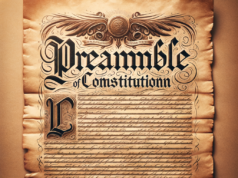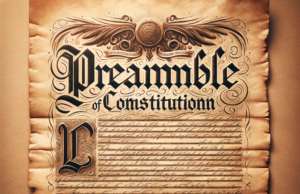Table of Contents
- 1 Understanding Federal Funds Control: A Key Component of Economic Stability
- 2 The Mechanisms of Federal Funds Control: How It Influences Monetary Policy
- 3 The Role of the Federal Reserve in Managing Federal Funds Rates
- 4 The Impact of Federal Funds Control on Inflation and Employment Rates
- 5 Analyzing Historical Trends: Federal Funds Control During Economic Crises
- 6 Future Outlook: The Evolving Role of Federal Funds Control in Economic Policy

In the complex landscape of economic management, federal funds control emerges as a pivotal element in ensuring stability and growth. This mechanism, often overlooked by the general public, plays a crucial role in shaping monetary policy and influencing key economic indicators such as inflation and employment rates. As the Federal Reserve navigates the challenges of a dynamic economy, understanding the intricacies of federal funds control becomes essential for grasping the broader implications for economic health.
Understanding Federal Funds Control: A Key Component of Economic Stability
Federal funds control refers to the management of the interest rates at which banks lend reserves to one another overnight. This system is fundamental to the United States’ monetary policy framework, as it directly influences the availability of credit and liquidity in the financial system. By regulating these rates, the Federal Reserve can effectively steer economic activity, ensuring that inflation remains in check while promoting sustainable growth. The control of federal funds is not merely a technical exercise; it is a strategic tool that underpins the overall stability of the economy, affecting everything from consumer spending to business investment.
The Mechanisms of Federal Funds Control: How It Influences Monetary Policy
The mechanisms of federal funds control operate primarily through open market operations, the discount rate, and reserve requirements. Open market operations involve the buying and selling of government securities to influence the amount of money in circulation and the federal funds rate. By adjusting the discount rate, the Federal Reserve can influence banks’ willingness to borrow, thereby affecting the overall supply of money. Additionally, reserve requirements dictate the minimum reserves each bank must hold, further impacting how much they can lend. Together, these tools allow the Federal Reserve to fine-tune monetary policy, responding to economic conditions and ensuring that the financial system remains robust.
The Role of the Federal Reserve in Managing Federal Funds Rates
The Federal Reserve plays a central role in managing federal funds rates, serving as the primary authority responsible for setting the target range for these rates. Through the Federal Open Market Committee (FOMC), the Fed assesses economic indicators, including GDP growth, unemployment rates, and inflation trends, to make informed decisions about interest rates. By signaling its intentions through public statements and policy adjustments, the Fed can influence market expectations and behavior. This proactive management is crucial, as changes in federal funds rates can ripple through the economy, affecting everything from mortgage rates to business loans, thereby shaping the economic landscape.
The Impact of Federal Funds Control on Inflation and Employment Rates
Federal funds control has a significant impact on inflation and employment rates, two critical indicators of economic health. When the Federal Reserve lowers the federal funds rate, borrowing becomes cheaper, which can stimulate consumer spending and business investment. This increased economic activity can lead to job creation and a reduction in unemployment rates. Conversely, if inflation begins to rise above acceptable levels, the Fed may increase the federal funds rate to cool off the economy, which can lead to higher unemployment in the short term. The delicate balance between fostering growth and controlling inflation underscores the importance of effective federal funds control in maintaining economic stability.
Analyzing Historical Trends: Federal Funds Control During Economic Crises
Historical trends reveal the critical role of federal funds control during economic crises. For instance, during the 2008 financial crisis, the Federal Reserve slashed the federal funds rate to near-zero levels in an effort to stimulate the economy and restore confidence in the financial system. This unprecedented move was accompanied by quantitative easing measures, which further expanded the money supply. Similarly, during the COVID-19 pandemic, the Fed again lowered rates and implemented various support measures to mitigate the economic fallout. These historical precedents illustrate how federal funds control can be a powerful tool in times of crisis, enabling the Federal Reserve to respond swiftly to protect the economy.
Future Outlook: The Evolving Role of Federal Funds Control in Economic Policy
Looking ahead, the role of federal funds control is likely to evolve in response to changing economic conditions and challenges. As the global economy becomes increasingly interconnected, factors such as international trade, technological advancements, and demographic shifts will influence monetary policy decisions. Additionally, the growing concern over income inequality and climate change may prompt the Federal Reserve to consider broader objectives beyond traditional inflation and employment targets. As policymakers navigate these complexities, federal funds control will remain a vital instrument, adapting to ensure that the economy remains resilient and equitable in the face of emerging challenges.
In conclusion, federal funds control is a fundamental aspect of economic stability, influencing monetary policy and shaping the financial landscape. As the Federal Reserve continues to manage this critical mechanism, understanding its implications for inflation, employment, and overall economic health becomes increasingly important. By analyzing historical trends and anticipating future developments, stakeholders can better appreciate the hidden power of federal funds control and its role in fostering a stable and prosperous economy.
























